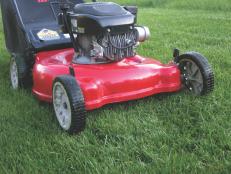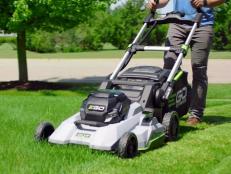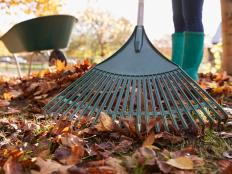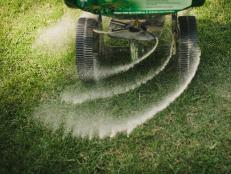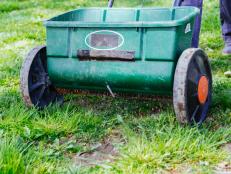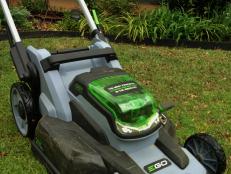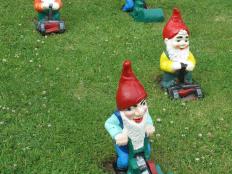Winter's Coming: When To Stop Mowing Your Lawn
Itching to retire your lawn mower for winter? Learn when to stop cutting the grass.

Fiskars.com
Fall ushers in a host of yardwork, with the No. 1 chore being leaf raking. As leaves tumble and planting beds beg for clean-up, lawn mowing is the task that seems most out-of-season. The truth is, in regions with cool-season turf, fall is the time when grass grows readily and quickly. The combination of cooler air and autumnal rains give lawns a jump start that sends them into rapid growth. The reverse is true for warm-season turf, which tends to go dormant in regions where fall brings frost.
To figure out when to stop cutting the grass, pay attention to these seasonal signals.
Soil temperature—Warm-season grasses go dormant when soil temps remain consistently below 55 degrees Farenheit. For cool-season grasses, the soil temp that triggers dormancy is 45 degrees F. You can track soil temps for your area online (search “soil temperature map”), or simply observe grass growth, which slows to a crawl before slipping into dormancy. You know grass is growing more slowly when the time between mowings stretches from every two weeks to once a month.
Leaves—Falling leaves signal the arrival of cooler air. Usually by the time trees are at least 50 percent bare, grass growth should be noticeably slower. But even when grass is dormant, you still need to keep leaves off the lawn, and the easiest way to do that is mulching with the mower.
Frost—Following a few hard frosts, warm-season grasses go dormant. Depending on soil temperature, cool-season grasses can keep growing and may still need mowing. Never mow a lawn when it’s covered in frost, though. It’s best to stay off frosty grass to protect turf crowns.
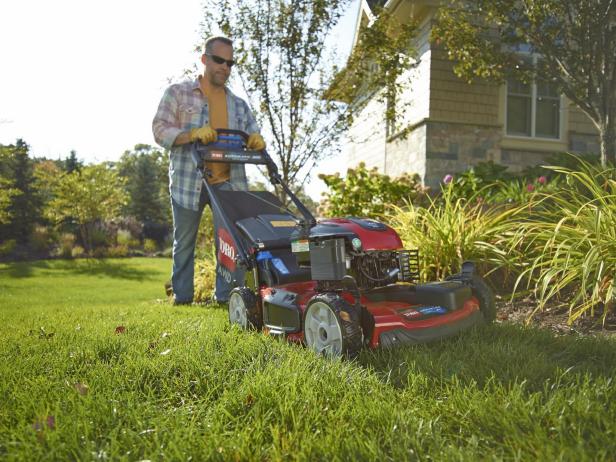
Toro.com
Fall Mowing Plan
Embrace autumn with a lawn mowing plan that prepares grass for winter. In regions where the snow flies, the goal of your final mowing is to leave grass as short as possible without scalping it. For many turf grasses, that’s a height of 2 inches. Gradually step down mower height through fall until you’re cutting grass to that short length. With each mowing, remember not to remove more than one-third of the total blade length. If grass is actively growing, you may need to mow twice in the same week to reduce grass blade height.
12 Year-Round Lawn Care Tips 15 Photos
No matter what time of the year you’re growing grass, brush up on your lawn care routine with these quick and easy tips.
Why Cut Grass Short?
Prevent disease—Long grass is more susceptible to winter fungal diseases known as snow mold, which can kill grass.
Deter voles—Long grass gives voles a place to hide from predators as they munch a ready food source: healthy grass plants and roots. If snow cover is absent, voles are less likely to venture into short grass, which provides no cover from cats, hawks, foxes or owls.
Reduce winter kill—Longer grass is more likely to experience winter kill, especially when snow is present. The snow folds grass blades over the plant crown, which can lead to fungal disease and rot.
In spring, short grass offers several advantages:
Faster green-up—Short grass doesn’t shade soil, allowing sunlight to reach soil and warm it. This leads to earlier growth, also known as green-up.
Less debris—Most leaves skip across short lawns in winter winds, but get bogged down in tall grass.
Less snow mold—Snow mold can occur even in regions without significant snow cover. Winter rains can also mat long grass and allow this fungus to grow and harm grass. Short grass blades stand up to winter rain and snow.
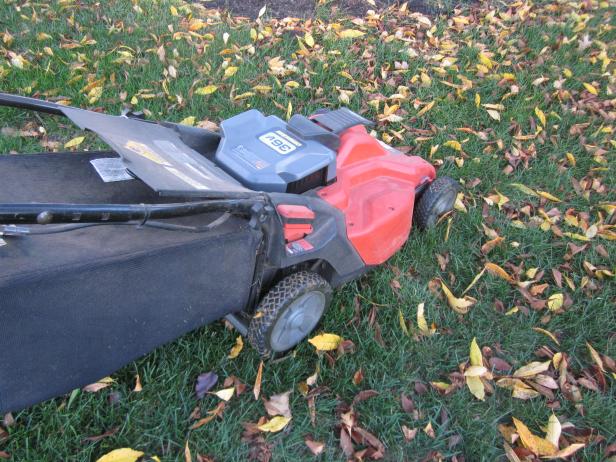
Julie Martens Forney
When to Stop Cutting the Grass
The right time to stop mowing the lawn is when grass stops growing. You may still need to run the mower to mulch leaves on the lawn until as late as December, depending on weather. An early snowfall that doesn’t stick around isn’t a signal to stop mowing. It all depends on grass growth and leaf cover on the lawn. A good rule of thumb is to keep mowing and mulching leaves until roughly 90 percent of them are down. At that point, drive your mower to the shed and give it some post-mowing-season TLC.








